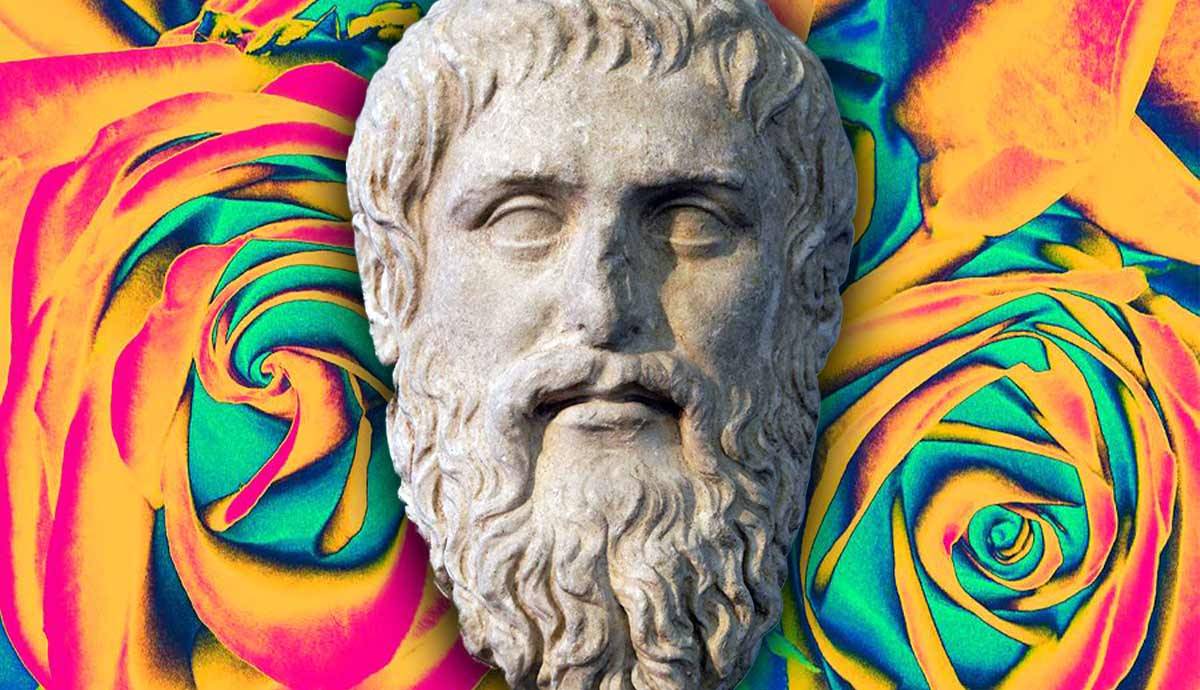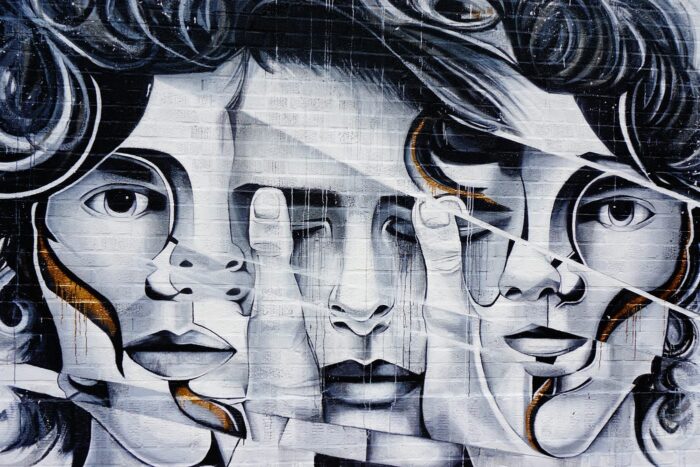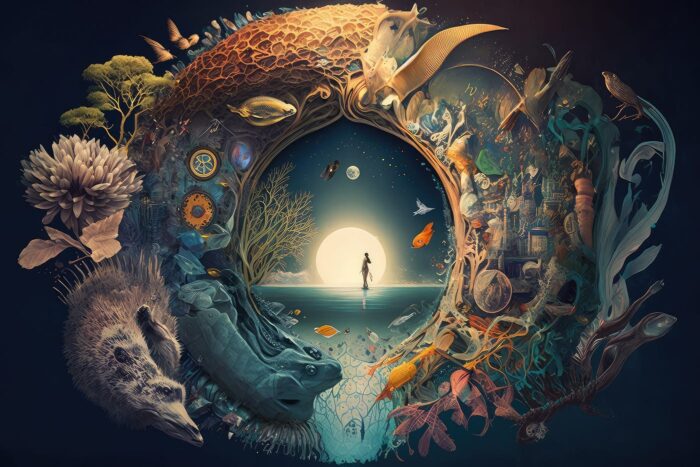
Art has always been a powerful means of expression for humanity, allowing us to communicate and understand the world around us in profound ways. Yet, beyond its aesthetic appeal, it has a deeper purpose that goes beyond what meets the eye. It is through the philosophy of art that we can truly delve into the intricacies and seek meaning in every medium.
Understanding the Philosophy of Art

At its core, it explores the fundamental questions surrounding art and its purpose. It delves into the very essence of why it exists, how it is created, and what it conveys to its audience. By examining and analyzing these questions, we can gain a deeper appreciation for the world of art and the impact it has on our lives.
It has been an integral part of human civilization since the dawn of time. From cave paintings to Renaissance masterpieces, art has served as a means of communication, expression, and reflection. It allows us to explore the depths of our imagination, to convey complex emotions, and to challenge societal norms.
Throughout history, philosophers have grappled with the nature of art and its role in society. Plato, for instance, believed that it was a mere imitation of reality, while Aristotle argued that it had the power to evoke emotions and provide catharsis. These contrasting viewpoints highlight the diverse perspectives within the philosophy of art.
The Intersection of Philosophy and Art

While philosophy seeks to understand the nature of existence and knowledge, art serves as a medium for expressing and exploring these philosophical inquiries. The two disciplines intertwine as artists use their creations to address fundamental questions about life, the universe, and human existence.
Artists often draw inspiration from philosophical concepts, such as the nature of beauty, the meaning of life, and the existence of God. Through their artistic endeavors, they invite us to ponder these philosophical ideas and engage in deep introspection. Whether it is a painting, a sculpture, or a piece of music, it has the power to transcend language and communicate profound philosophical truths.
Moreover, philosophy provides a framework for analyzing and interpreting art. It offers us the tools to critically examine the intentions of the artist, the symbolism embedded in the artwork, and the societal context in which it was created. By applying philosophical theories and concepts, we can unravel the layers of meaning within a work of art and appreciate its intellectual depth.
The Role of Interpretation in Art
It is inherently subjective, and its interpretation varies from person to person. Each individual brings their unique experiences, emotions, and perspectives when engaging with a work of art. This subjectivity is what makes it so captivating and thought-provoking. It invites us to explore different meanings and allows for a multitude of interpretations.
When we encounter a painting, for example, we may see different symbols, colors, and brushstrokes that resonate with us on a personal level. Our interpretation of the artwork is influenced by our cultural background, our emotional state, and our knowledge of art history. This diversity of interpretations enriches the artistic experience, as it encourages dialogue and fosters a deeper understanding of the human condition.
Different Philosophical Approaches

Throughout history, various philosophical approaches have emerged to understand and appreciate art. These approaches navigate the complex realm of aesthetics, examining the sheer beauty and emotional impact of artistic expressions.
Formalism and the Aesthetic Experience
Formalism focuses on the qualities inherent in a work of art, such as form, color, and composition. It seeks to understand the aesthetic experience and the emotional responses evoked by the artwork itself. Formalist philosophers argue that one should appreciate art solely for its visual and sensory appeal, divorcing it from any external factors or context.
Expressionism and Emotional Resonance
In contrast to formalism, expressionism places great emphasis on the emotional resonance that art can generate. It explores the artist’s ability to convey their innermost thoughts and emotions through their work. Expressionist philosophers argue that it should evoke intense feelings and ignite a strong emotional response in its audience.
Postmodernism and the Deconstruction of Art

Postmodernism challenges traditional notions of art, rejecting the idea of a timeless and objective truth. Instead, it embraces the notion that art is subjective and contextual. Postmodernist philosophers argue that it should deconstruct societal norms, challenge established hierarchies, and provoke critical thinking.
The Medium and the Message
The choice of medium in art plays a vital role in shaping its meaning and impact on the viewer. The medium serves as a vehicle for artistic expression, influencing the way messages are conveyed and interpreted.
The Influence of Medium on Artistic Meaning
Each artistic medium carries its unique characteristics and limitations, which inevitably impact the artistic message. Paintings, sculptures, photographs, and digital art all possess distinct qualities that shape the viewer’s experience. The medium expands the possibilities for artists to communicate their intended meaning.
For instance, custom oil painting offers a timeless and deeply personal means of artistic expression, immortalizing cherished memories and individuals in a truly unique and poignant manner. Through the meticulous strokes and vibrant hues of oil paints, artists can capture the essence and personality of their subjects, transcending the limitations of mere photographs.
When opting for a custom oil painting portrait, artists can infuse the artwork with emotion, sentiment, and a sense of intimacy that is unparalleled. For those seeking customized artwork, Memorialize Art stands as a distinguished website, expertly dedicated to crafting personalized art that seamlessly encapsulates the essence of its subject, ensuring a meaningful and lasting tribute.
The Evolution of Artistic Mediums
As society progresses and technology advances, new artistic mediums emerge. Artists constantly harness these innovations to push the boundaries of artistic expression. From traditional canvas paintings to experimental digital installations, the evolution of artistic mediums enables a continuous exploration of new frontiers.
The Impact on Society

Art philosophy not only delves into the realms of aesthetics and interpretation but also holds influence over larger societal contexts.
Reflection of Cultural Values
It is a reflection of cultural values, providing a window into the beliefs, ideologies, and aspirations of a society. It serves as a means for communities to express their identity and articulate their collective experiences. Through art, cultural values can be preserved, challenged, and reimagined.
The Role of Art in Social Change
It has the power to ignite social change and spur conversations around important issues. Artists have historically used their creations to challenge prevailing social norms, spark revolutions, and advocate for justice. By capturing the collective consciousness, art becomes a catalyst for social transformation.
The Future

The field of art philosophy is not static; it continuously evolves alongside society and technological advancements.
Emerging Trends
As society evolves, so do the questions and concerns that art philosophers explore. New movements, theories, and perspectives constantly emerge as artists and thinkers grapple with the challenges and opportunities of the modern world. Questions regarding the role of art in a digital age, the ethical implications of artistic choices, and the relationship between art and artificial intelligence are just a few examples of emerging trends.
The Role of Technology in Shaping Philosophy

Technology has revolutionized the production, distribution, and consumption of art. From virtual reality experiences to collaborative platforms, technology has opened up new avenues for artistic expression. As art continues to embrace technology, art philosophers must navigate the ethical, social, and aesthetic implications of these advancements.
Takeaway
The philosophy of art invites us to embark on a profound journey through the intricate tapestry of artistic expression, where the choice of medium holds the power to shape and redefine meaning. It encourages us to question, interpret, and embrace the kaleidoscope of human creativity.
In this quest for understanding, Memorialize Art emerges as a beacon, offering a remarkable avenue for individuals to not only explore the philosophy of art but also to partake in its creation. Through their dedicated craftsmanship in custom oil painting portraits, Memorialize Art crafts tangible memories that transcend time, capturing the essence of cherished moments and loved ones. It’s an invitation to engage with art’s profound philosophical questions while simultaneously immortalizing them in beautiful, personalized artwork.














